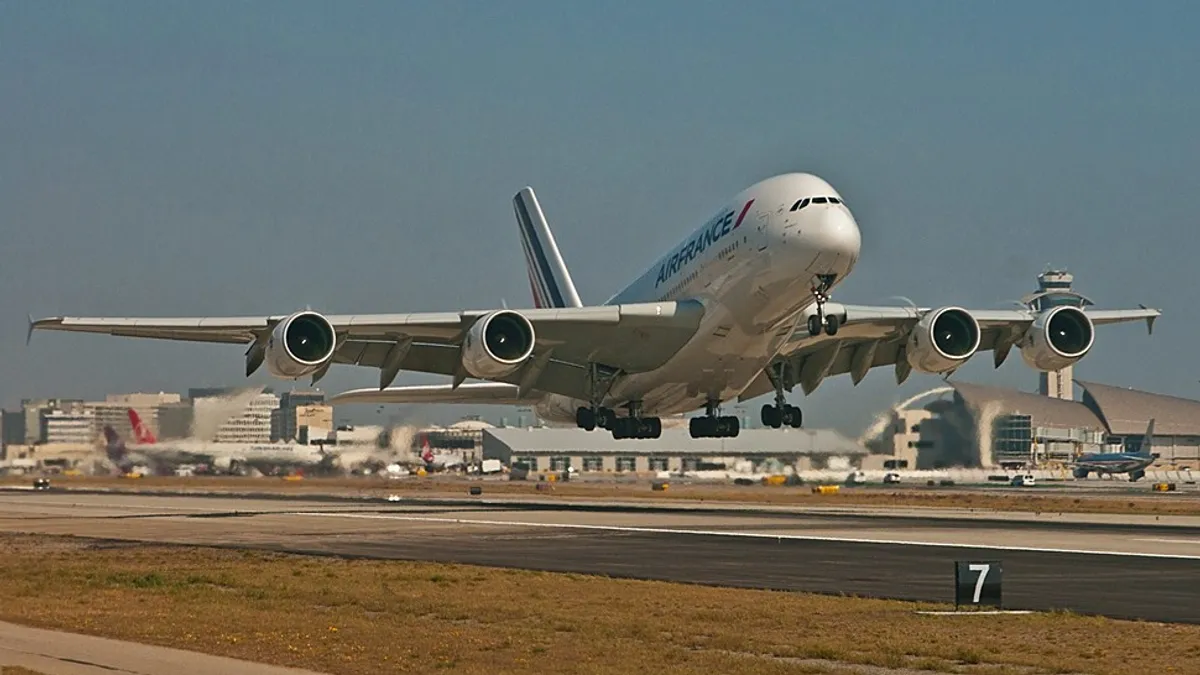Dive Brief:
- President Obama has signed a 15-month, stopgap Federal Airport Administration bill that will continue airport construction grants and spending for other FAA programs until September 2017, Engineering News-Record reported.
- The bills holds airport construction funding steady at 2016's level of $3.35 billion, a disappointing number for industry groups and some legislators who had hoped for an increase in the authorized spend. Lawmakers said they're still working on a longer-term bill.
- The bill also limits drone activity around emergency response scenes and establishes detection methods for unauthorized drone use near airports and "critical" infrastructure.
Dive Insight:
In May 2016, market research firm IBISWorld predicted an annual growth rate of 8.6% for airport terminal construction primarily due to the government support of large terminal projects. IBISWorld said the growth figures are a result of government funding, which obscures the industry's "volatility." That reported volatility, however, hasn't dampened the desire of many airport officials to embark on large-scale construction projects.
Most recently, Dallas/Fort Worth airport awarded AECOM a $100 million airport improvement contract that includes construction and program management services. AECOM will complete various airfield and landside improvements, as well as continue with terminal B and E renovations, estimated at approximately $2.7 billion. Also this month, Denver International Airport officials announced they entered into an agreement with Spain-based Ferrovial Airports to develop a public-private partnership (P3) plan to renovate a 1.5-million-square-foot terminal. Once they have the terms in place, DIA officials will submit the proposed deal to the Denver City Council for approval.
The drone provisions of the new bill come after the FAA released its small commercial drone use rules last month. The new regulations, which apply only to drones of 55 pounds or less, require that operators take a test and be licensed, limit operations to daylight hours at a maximum altitude of 400 feet and restrict speed to 100 mph. According to industry experts, and as the new FAA bill indicates, these inaugural rules laid the groundwork for future refinement.












